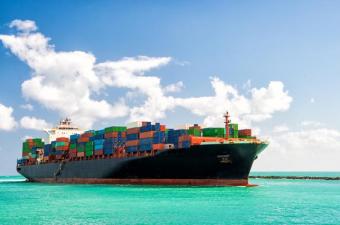
OVERVIEW
Introduction
This decision of the Court of Appeal provides important clarification in relation to the apportionment of liability for cargo claims under the New York Produce Exchange Form Inter-Club Agreement. It confirms that apportionment depends upon the identification of the cause of the underlying claim in question, without any regard to questions of legal or moral culpability. This is of considerable practical importance given that the founding purpose of the Inter-Club Agreement was to provide a “mechanistic” formula which allows claims to be apportioned between P&I Clubs on a ‘knock for knock’ type basis, ideally without reference to arbitration or Court procedures. In that regard it is a decision which it is expected will be welcomed.
Background
The Owners of the vessel “Yangtze Xing Hua” had chartered her for a time charter trip, on an amended New York Produce Exchange form, carrying soya bean meal from South America to Iran. The charterparty incorporated the 1996 version of the New York Produce Exchange Form Inter-Club Agreement (“the ICA”).
The vessel arrived off the discharge port in Iran in December 2012. The charterers had not been paid by the receivers, and they ordered the vessel to wait, ultimately for over 4 months. During this time parts of the cargo started to overheat. When discharge finally took place a claim was made by the receivers against the vessel for cargo damage, which was settled by the owners for over €2.5m. The owners claimed that sum together with unpaid hire from the charterers.
The parties were in agreement that liability fell to be determined according to the ICA. In particular, by reference to paragraph 8(d) of the ICA, which provides for apportionment as follows:
(8) Cargo claims shall be apportioned as follows:
(a) Claims in fact arising out of unseaworthiness and/or error or fault in navigation or management of the vessel:
100% Owners
save where the Owner proves that the unseaworthiness was caused by the loading, stowage, lashing, discharge or other handling of the cargo, in which case the claim shall be apportioned under sub-Clause (b).
(b) Claims in fact arising out of the loading, stowage, lashing discharge, storage or other handling of cargo:
100% Charterers
unless the words “and responsibility” are added in Clause 8 or there is a similar amendment making the Master responsible for cargo handling in which case:
50% Charterers
50% Owners
save where the Charterers proves that the failure properly to load, stow, lash, discharge or handle the cargo was caused by the unseaworthiness of the vessel in which case:
100% Owners
(c) Subject to (a) and (b) above, claims for shortage or over carriage:
50% Charterers
50% Owners
unless there is clear and irrefutable evidence that the claim arose out of pilferage or act or neglect by one or the other (including their servants or sub-contractors) in which case that party shall bear 100% of the claim.
(d) All other cargo claims whatsoever (including claims for delay to cargo):
50% Charterers
50% Owners
unless there is clear and irrefutable evidence that the claim arose out of the act or neglect of the one or the other (including their servants or sub-contractors) in which case that party shall then bear 100% of the claim.
The question was first considered by a panel of experienced commercial arbitrators. The charterers contended that the cargo damage had been caused by the negligence of the crew in failing properly to monitor the cargo temperatures. The tribunal rejected this, and found that the cause of the damage was a combination of the inherent nature of the cargo (and its oil and moisture content) together with the prolonged period at anchor at the discharge port.
Furthermore, the charterers had contended that the word “act” in clause 8(d) of the ICA meant a “culpable” act and, therefore, that in the absence of any finding that the charterers had been at fault in ordering the vessel to wait offshore for a prolonged period, the proviso to clause 8(d) did not apply, and the correct apportionment was 50/50. The tribunal rejected this argument, and held that there was no requirement of culpability.
The charterers’ appeal was rejected by Teare J, who upheld the award of the arbitrators and held that clause 8 of the ICA was not concerned with “fault” but was rather a mechanism for assigning liability for cargo-claims by reference to the cause of the damage to the cargo regardless of fault.
Court of Appeal Judgment
The charterers appealed to the Court of Appeal, arguing as they had before the tribunal and the Judge that the proviso to clause 8(d) required a culpable act and that, indeed, culpability was a trigger for apportionment throughout the apportionment regime set out in sub-clauses 8(a), (b), (c) and (d).
The owners, on the other hand, contended that the ICA was concerned to identify the cause of the underlying claim, and that no part of clause 8 relied upon culpability or fault as a criterion for apportionment. Therefore, the word “act” in the phrase “act or neglect” in sub-clause 8(d) meant any causative act, whether culpable or not.
Longmore LJ began by reiterating the underlying rationale and purpose of the ICA, drawing upon the well-known judgments of Robert Goff J and Kerr LJ in The Strathnewton [1982] 2 Lloyd’s Rep. 296 and [1983] 1 Lloyd’s Rep. 219, and that of Hobhouse J in The Benlawers [1989] 2 Lloyd’s Rep. 51 to the effect that the ICA was primarily for the benefit of the parties’ insurers, and had the character of a ‘knock-for-knock’ type agreement. The Court then considered the various arguments deployed by the charterers in support of their appeal.
First, the charterers argued that in previous versions of the ICA (namely the 1970 and 1984 incarnations) apportionment was predicated on fault, and there had been no intention on the part of the framers of the ICA to abandon that requirement in the 1996 version of the agreement. However, the Court held that the “archaeology” of the ICA did not assist. There had been substantial changes between the 1984 and 1996 versions, and the effect of the changes was clear.
Second, the charterers contended that claims arising out of unseaworthiness and/or error or fault in navigation or management of the vessel under sub-clause (a) and claims arising out of cargo operations under sub-clause (b) were concerned with fault, and that therefore it would be inconsistent if sub-clause (d) was not. The owners however met this contention by arguing that fault was not in fact a requirement in any of the sub-clauses of clause 8, and that the correct interpretation of the clause, consistently with the underlying rationale and purpose of the ICA, was that it was concerned to identify the cause of the cargo claim which fell to be apportioned. The Court of Appeal agreed with the owners. Sub-clauses (a), (b) and (c) encompassed fault, but did not require it.
The critical factual question under clause 8 was that of causation. The question was: did the claim “in fact” arise out of the act, operation or state of affairs described? It did not depend upon legal or moral culpability. Furthermore, there was not any stated or obvious criterion against which such culpability, if relevant, could be judged.
Third, the charterers contended that an approach to apportionment based on causation would be hard to apply in practice. The Court of Appeal disagreed. Many separate areas of the law had worked out how causation is to be dealt with, and maritime law was no exception. Longmore LJ gave the example of an implied (or any express) indemnity given to shipowners for following orders of the charterers in a time charterparty was an example close to the present case.
The charterers also argued that the effect of interpreting the word “act” in clause 8(d) to mean any act, whether culpable or not, would lead to unacceptably wide liability on the part of charterers. This too the Court of Appeal rejected. Hamblen LJ observed that causation was an important limiting factor, and that clause 8(d) was a sweeping up provision, which only applied when there was no apportionment under sub-clauses (a), (b) or (c).
The appeal was therefore dismissed, and the decision of the tribunal and Teare J. upheld.
Discussion
Although the decision focussed upon the meaning of the word “act” in sub-clause 8(d) of the ICA, in question was the overall operation of clause 8 as a whole, and whether culpability was, as the charterers contended, a “trigger” of apportionment throughout. Had that contention been accepted it would have had far reaching consequences for the settlement of cargo claims between P&I Clubs under the ICA, and also as between owners and charterers, given that the ICA is commonly incorporated into time charters on the New York Produce Exchange form.
It may be, as the charterers contended, that identifying the effective cause of a claim can raise difficult questions which are not always straightforward to resolve. However, the introduction of a requirement of culpability would surely have served only to add an additional layer of complexity, that would have made it more difficult, not less, for apportionment of claims to be resolved in the “mechanistic” and on the “knock-for-knock” basis which the framers of the ICA intended.
The decision of the Court of Appeal, that the ICA is concerned with causation and not culpability as the criterion for apportionment is consistent with the previous approach to earlier versions of the ICA in The Strathnewton and The Benlawers, and also supports the underlying rationale and purpose of the agreement. It is expected therefore that it is a decision that P&I Clubs are likely to welcome.
Stewart acted for the defendent owners, instructed by Bentleys, Stokes & Lowless.

